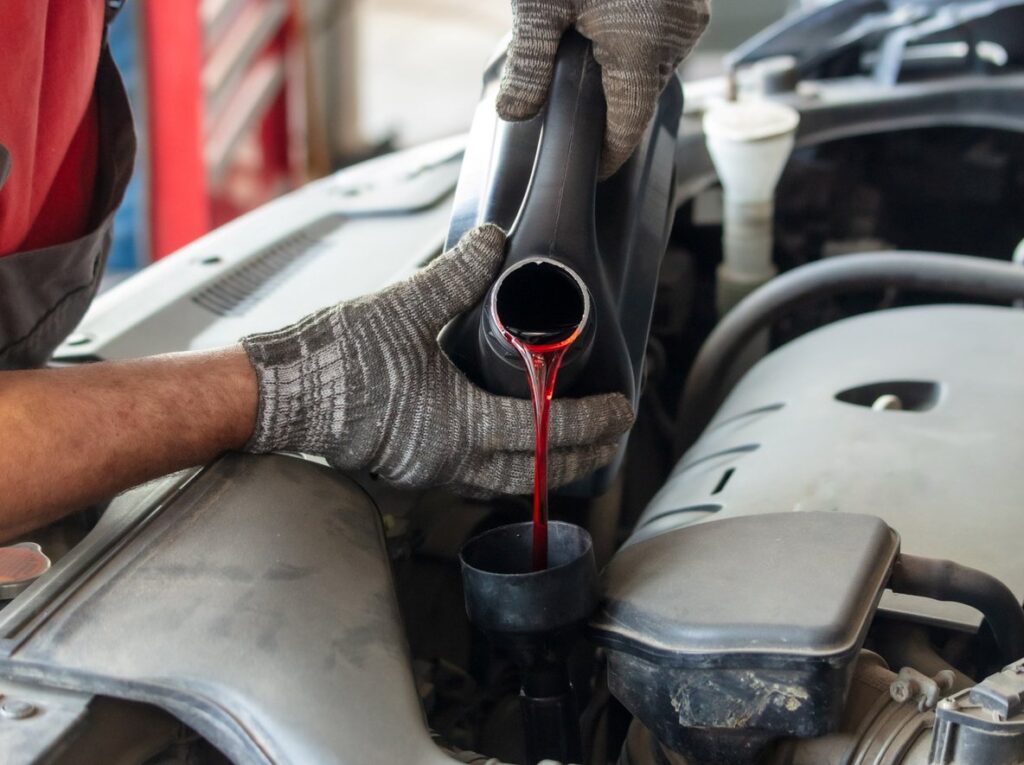The transmission is one of the most complex parts of a vehicle, responsible for transferring power from the engine to the wheels. This essential component consists of numerous interconnected parts that work together to keep your vehicle moving smoothly. However, when a transmission fails or requires significant repairs, it can lead to major inconveniences and quickly become an expensive fix.
Our blog, featuring insights from the experts at Kennedy Transmission, covers all aspects of transmission and automotive repair. We’ll discuss the importance of transmission flushing and fluid changes to help you keep your transmission in excellent condition throughout the year.
How To Check Transmission Fluid the Right Way
There are specific steps you must follow to get an accurate reading of your transmission fluid levels. Follow these instructions below to check your transmission fluid correctly:
- Park on a flat surface and set the parking brake.
- Start the engine to warm it up.
- Find the transmission fluid dipstick, usually red and positioned near the engine oil dipstick.
- Remove the dipstick, wipe it clean, fully reinsert it, then remove it again.
- Check the level against the markings on the dipstick.
The fluid should be within the hot or full range. If the level is low, it’s time to add more transmission fluid. If you notice the transmission fluid color changing from bright red to brown or black, and smell a burnt odor, this indicates that the fluid is no longer lubricating effectively. This can lead to overheating, slippage, and unusual noises.
Signs You Might Need Transmission Repair From a Transmission Shop
You will notice strange things when your transmission starts having trouble. Symptoms of a damaged or improperly functioning transmission include:
- Fluid leaks
- Grinding, clicking, or whining noises
- Rough or delayed shifting
- Check engine light
- Poor acceleration, stalled engagement, and shaking
If you notice one or more of these symptoms, it’s crucial to take your car to a Kennedy Transmission shop promptly. The sooner we get the vehicle on the transmission jack, the quicker we can diagnose the issue and start fixing it.
Is a Transmission Flush Always Necessary?

A transmission flush is recommended every 30,000 to 100,000 miles for automatic transmissions and every 30,000 to 60,000 miles for manual transmissions. A transmission flush, where the new fluid is circulated by a machine to remove old fluid and debris, can help restore smooth shifting and prevent slipping, improving your transmission performance.
It also helps extend your transmission’s life by eliminating contaminants and providing proper lubrication, which can prevent costly breakdowns or repairs in the future.
Driving conditions, transmission type, manufacturer recommendations, fluid condition, and the vehicle’s age all affect when you should flush the transmission fluid. More frequent flushes may be required, every 15,000 to 20,000 miles, for vehicles that often experience stop-and-go traffic or tow heavy loads.
When and Why To Schedule a Transmission Fluid Change
Along with flushing, changing transmission fluid is essential for preserving your vehicle’s longevity and performance. Prevent costly repairs caused by debris or wear and tear by having the transmission fluid changed every 30,000 to 60,000 miles. Some newer cars recommend changing the fluid at 100,000-mile intervals, but always check the manufacturer’s recommendations for specific guidance.
If you have a high-mileage vehicle with no record of transmission fluid changes, it’s best to stick with a fluid change. Transmission flushes can dislodge particles and cause additional problems.
Smart Driving Habits That Reduce Transmission Wear
Here are some simple, ready-to-apply driving practices recommended to minimize wear on your transmission, including towing advice and effective driving habits. Find these helpful tips below:
- Avoid aggressive, jerky acceleration and sudden braking.
- Avoid excessive speeds and harsh gear changes.
- Avoid exceeding your vehicle’s towing capacity.
- Shift smoothly in with your manual transmission.
- Use manual mode, if available.
- Shift smoothly in a manual transmission, practicing clutch control, throttle modulation, and rev matching.
Enhanced Transmission Longevity With Expert Care From Kennedy Transmission
Consistent maintenance and smart driving habits can help keep your transmission in good condition and prolong its lifespan until it’s time to change the transmission fluid or flush it. Our transmission specialists are here to help you get back on the road smoothly. Follow a preventive maintenance schedule of transmission service and repair to avoid future damage and costly repairs.
Schedule an appointment by contacting us online at one of our Kennedy Transmission shops in Minnesota to have your transmission serviced. If you have questions about car problems, such as how to keep your transmission cool, call the transmission specialists at Kennedy.

